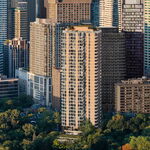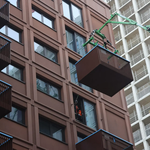robmausser
Senior Member
So the train past Oshawa will be smaller? But it says people will stay seated during the entire ride meaning they are going to couple the trains together to get to Union?
I wonder what rolling stock they got since we have not seen a tender go out for it.
The plan for all of the RER lines is to have two types of service, one express and one local, and sometimes two types of trains to serve that need.
For some lines that are fully electrified, like Stouffville and Barrie, that will probably just be the same type of bi-level EMU train running in the RER section, and the express service out to Barrie etc. For Kitchener, because of the CN portion, that will probably be EMU trains for the RER section, and dual mode locomotives pulling the existing bilevel GO cars out to Kitchener. The same goes for Lakeshore West past Aldershot.
So the precedent to use two different types of trains on one line will already be set. And those trains that go to the outer edges of the network will bypass most RER stations, running express to union.
With that precedent in mind, a similar service to Bowmanville would probably be set. With a special train, perhaps a dual mode single level D/EMU running from Bowmanville to Pickering GO (the current terminus of the express services), and then express to Union.
This would be no different than the way all the other GO RER lines will operate, and the use of a different rolling stock to serve this area will be no different than some of the other RER lines as well.
The only difference will be the type of rolling stock used, specific to meet the needs of this line.





